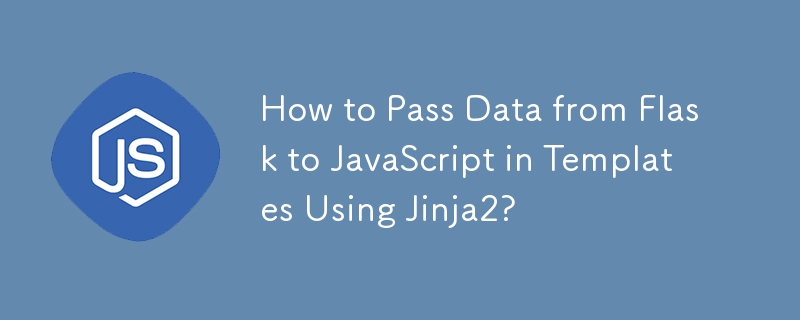

Passing Data from Flask to JavaScript in Templates
When fetching data from an API in a Flask application, there may be a need to pass that information to JavaScript in the corresponding template. This article explores how to achieve this by leveraging the power of Jinja2 templating.
In Flask, the render_template function allows us to pass variables to HTML templates. However, to make these variables available in JavaScript, an additional step is required.
Jinja2, the templating engine used by Flask, provides syntax that enables the embedding of Python expressions within templates. This means that we can use {{ variable }} anywhere in the template, including within JavaScript scripts.
For instance, consider the following Flask route that retrieves coordinates from an API:
<code class="python">@app.route('/')
def get_data():
events = api.call(get_event, arg0, arg1)
geocode = event['latitude'], event['longitude']
return render_template('get_data.html', geocode=geocode)</code>In the corresponding template, we can pass the geocode variable to JavaScript like so:
<code class="html"><script>
var someJavaScriptVar = '{{ geocode[1] }}';
</script></code>This allows us to access the value of geocode[1] as someJavaScriptVar in our JavaScript code.
Alternatively, to pass the geocode variable as an array, we can generate the array definition in the template:
<code class="html"><script>
var myGeocode = ['{{ geocode[0] }}', '{{ geocode[1] }}'];
</script></code>Jinja2 also supports more advanced constructs, such as loops and if statements, which can be used to simplify the generation of complex data structures.
Furthermore, the tojson filter can be employed to convert the geocode tuple to a JSON string, making it more suitable for use in JavaScript:
<code class="html"><script>
var myGeocode = {{ geocode | tojson }};
</script></code>With these techniques, developers can seamlessly share data between Flask and JavaScript, enabling interactive and dynamic web applications.
The above is the detailed content of How to Pass Data from Flask to JavaScript in Templates Using Jinja2?. For more information, please follow other related articles on the PHP Chinese website!




